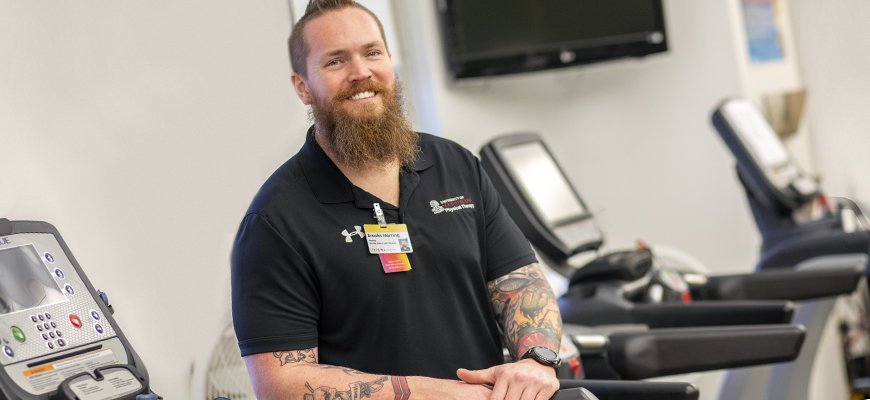
Veteran seeks to help injured soldiers regain full strength
Doctoral candidate wants to take physical therapy to the next level
Posted on: June 15, 2020; Updated on: June 15, 2020
By Page Ivey, pivey@mailbox.sc.edu, 803-777-3085
When Brooks Herring decided to give college a try after serving in the U.S. Navy and working for the Army, he had one goal in mind: Creating a physical therapy program that would help wounded service members get back to the level of strength and activity they had before their injury.
All during his undergraduate years at the University of South Carolina, the self-described Gamecock for life says he took every opportunity to have a typical college student experience while never losing sight of his ultimate goal.
“I doubted myself coming back to school after all those years,” says Herring, who graduated summa cum laude and with leadership distinction in 2018 with a major in exercise science and a minor in business. “Once I made it through that first semester with a 4.0, I knew I would be OK.”
Herring is in his second year of the doctor of physical therapy program at the university’s Arnold School of Public Health. After that, he plans to pursue a Ph.D. in exercise science, focusing on his goal of using research-based evidence to help improve the lives of wounded veterans.
“I came home with all 10 fingers and toes and I feel guilty about that,” Herring says.
He has created Run Phase, a 501(c)(3) nonprofit that has partnerships in place waiting for him to finish his doctorate so he can begin working with veterans. Herring is working with professors in his graduate program to learn as much as he can about the human body and to use best practices to create a program that will help a variety of injuries.
“A lot of the work that needs to be done will come after graduation,” Herring says. “It will be a clinic with a different approach.”
The goal of much physical therapy is to get the patient able to handle daily tasks needed for independent living, such as being able to get around or take care of personal needs inside the home. What Herring envisions is more like the physical therapy that high-performance athletes get to rehab an injury.
I came home with all 10 fingers and toes and I feel guilty about that.
Brooks Herring, second year, doctor of physical therapy student
“This is a young, physically fit, active and motivated population that has gone from a very high level of performance to a very low level,” Herring says of soldiers who have suffered a traumatic injury, such as the loss of a limb, a severe burn or brain injury associated with improvised explosive devices seen so much during the recent wars in Iraq and Afghanistan.
“You couple that with combat trauma and you’re adding a psychological component that often isn’t even considered during PT,” Herring says. “Our current therapy regimens are getting them nowhere near where they were.”
Herring’s program would take over where traditional physical therapy leaves off — “for those that want to get to the next level of rehab.”
The clinical component for now will require funding because that is not the goal of federally funded physical therapy for servicemembers. But Herring is hoping that once he has completed his second doctorate, which will allow him to focus on research, he will be able to show the value of the higher level of rehab so it will be paid for by veterans’ benefits.
“I am able-bodied enough to benefit those who weren’t as lucky as I was,” Herring says. “I know the benefits of physical activity and I want to bring that experience home to others.”
Share this Story! Let friends in your social network know what you are reading about